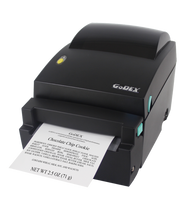The Complete Guide to Choosing the Right Label Printer for Your Business
18th Jul 2025
Are you using the wrong label printer for your business—and paying the price in time, money, and quality?
Labeling isn’t just a backend task. It impacts branding, compliance, logistics, and customer experience. Yet, countless businesses underestimate how much their label printer affects daily operations. A printer that’s too slow can bottleneck production.
One that lacks resolution can compromise product presentation. A printer incompatible with your environment can break down under pressure. These mistakes don’t just cost resources—they cost reputations.
The demand for in-house labeling is rising fast—especially as businesses seek more control, better aesthetics, and faster turnaround times. Whether you’re labeling food, chemicals, cosmetics, or logistics parcels, choosing the right machine can mean the difference between profit and hassle.
That’s where DuraFast Label Company comes in.
We specialize in providing high-quality color label printers and thermal label printers that meet a wide range of business needs. Whether you’re a small startup or a high-volume manufacturer, our printing solutions help you produce professional, durable, and cost-effective labels—right in your facility. Our customers rely on us not only for great products but for insights that help them make confident purchases.
This guide will walk you through everything you need to know before you purchase a label printer—from comparing inkjet, thermal, and laser options to understanding your industry-specific requirements, resolution needs, print speed expectations, and even maintenance tips to maximize lifespan.
Understanding the Label Printing Technologies
Before making any decisions, you need to understand the key types of label printing technology available. Each one is suited to a different application, with its own pros and limitations.
1. Inkjet Label Printers
How Inkjet Printers Work:
Inkjet label printers operate by spraying tiny droplets of ink onto the surface of a label. This is accomplished through a series of nozzles, which allow for high-resolution output that can produce rich, detailed images. Inkjet printers typically fall into two categories: dye-based and pigment-based.
- Dye-based ink: This type of ink is water-soluble and produces vibrant, vivid colors. It's ideal for applications where eye-catching visuals are essential—like retail and consumer product packaging.
- Pigment-based ink: Unlike dye-based ink, pigment-based ink uses solid particles suspended in liquid. These particles are more resistant to water, UV light, and fading, making pigment-based inkjet printers a better option for products exposed to harsh environmental factors, like outdoor or refrigerated goods.
Advantages:
- High-resolution, full-color output: One of the most compelling features of inkjet printers is their ability to produce incredibly sharp and vibrant colors. This makes them excellent for products where brand appearance and product imagery are vital. They excel at reproducing photographs, logos, and intricate designs with precision.
- Versatility in substrates: Inkjet printers are highly compatible with a wide range of label materials, from glossy to matte, and even specialty papers, synthetic materials, or transparent films. This gives you a lot of flexibility in choosing the best label stock for your needs.
- Great for branding and retail labels: When you need to create product labels that stand out on the shelf, inkjet printers can provide the color depth and quality needed for high-end packaging, promotional labels, and retail tags.
Limitations:
- Higher ink costs: The cost of ink cartridges or refills can add up over time. While the initial printer investment may not be as high as some other printing technologies, inkjet printers can be more expensive to operate in the long run, especially if you're printing a high volume of labels.
- Slower print speeds: Inkjet printers, particularly older or budget-friendly models, can be slower than other printing methods. If you're printing large quantities of labels at once, it might take more time compared to faster options like thermal printers.
- Limited durability: Not all inkjet inks are resistant to environmental factors like water, heat, or UV light. Dye-based ink, for example, is more prone to smudging or fading under exposure to moisture or sunlight. While pigment-based inks offer improved durability, they may not be enough for applications where the label needs to endure extreme conditions.
2. Thermal Label Printers
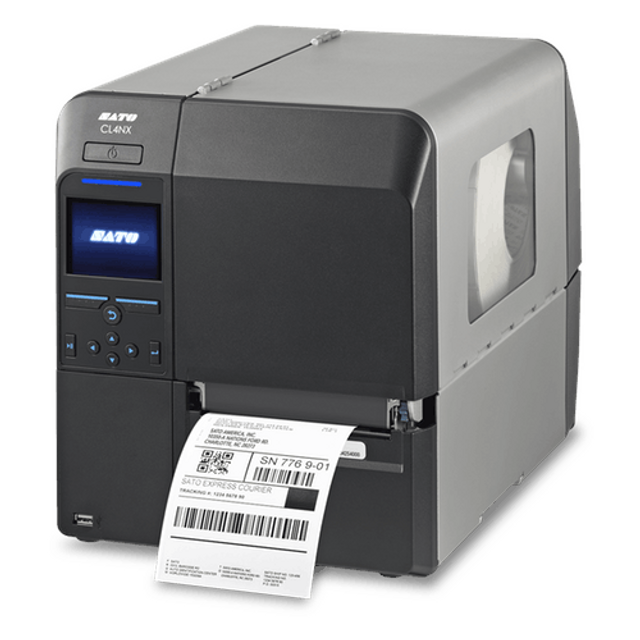
Thermal printers use heat to create images on labels. There are two primary types of thermal printers: direct thermal and thermal transfer.
Direct Thermal Printers:
Direct thermal printers create images by applying heat to specially coated labels, which then turn black in the areas where heat is applied. These printers are commonly used for applications like shipping labels, receipts, and barcodes.
How it works: The printhead heats specific areas of the thermal paper, causing it to darken. The process is quick and efficient, and since no ink, toner, or ribbons are involved, it’s a cost-effective printing solution.
Thermal Transfer Printers:
Thermal transfer printers, on the other hand, use a heated printhead to melt ink from a ribbon onto the label material. This method creates more durable prints that can withstand various environmental factors.
How it works: A special ribbon (usually made of wax, resin, or a combination) is applied to the label surface under heat from the printhead. The heat causes the ribbon’s ink to transfer to the label, resulting in crisp, long-lasting images and text.
Advantages:
- Low running costs (direct thermal): Direct thermal printing doesn’t require the use of ink or toner, which keeps operating costs low. You only need to buy the special thermal paper, which is cheaper than buying ink cartridges or ribbons.
- High-speed output: Thermal printers, particularly direct thermal models, are known for their high-speed printing capabilities. This makes them an excellent choice for applications that require quick turnaround, like shipping labels or high-volume barcode printing.
- Durability (thermal transfer): Thermal transfer printers produce labels that are smudge-resistant and durable, even under exposure to UV light, moisture, chemicals, and extreme temperatures. This makes them suitable for industrial applications and harsh environments.
- Great for barcodes, shipping labels, and inventory tags: Thermal printers are often the go-to solution for logistics and retail applications, as they can print high-quality barcodes that remain scannable for long periods.
Limitations:
- Fading issues (direct thermal): One of the biggest drawbacks of direct thermal printing is that the labels can fade over time, especially when exposed to heat, sunlight, or moisture. This makes them unsuitable for long-term use or for labeling products that need to last for extended periods.
- Monochrome output: Thermal printers, particularly direct thermal ones, are typically limited to monochrome printing. If you require full-color branding or high-impact visuals, thermal printers might not be the right choice for your needs.
- Limited media compatibility (thermal transfer): While thermal transfer printers are compatible with a variety of materials, they still have some limitations when it comes to the types of media they can handle. Some more intricate or specialty materials may not perform well with thermal transfer printing.
3. Laser Label Printers
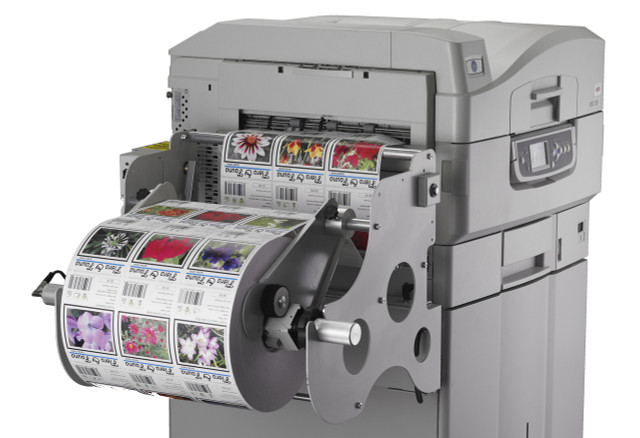
Laser printers are very similar to the printers you’d find in a typical office environment. They use static electricity to transfer toner onto a label surface, where heat fuses the toner into the paper. Laser printers are commonly used for printing labels in low to medium-volume environments.
How Laser Printers Work:
Laser printers use a laser beam to create an electrostatic image on a drum. This image is then transferred to a label using toner (powdered ink), which is melted onto the paper by a heated fuser. Laser printers are faster than inkjet printers and are typically used for office-style labels, such as address labels or small batch production.
Advantages:
- High-speed output: Laser printers are known for their fast printing speeds, making them ideal for office environments and situations where you need to produce labels quickly without sacrificing quality.
- Sharp text and barcodes: Laser printers produce very sharp and clear text, which is perfect for printing labels that require legible fonts and precise barcodes. This makes them excellent for office labels, inventory management, and more.
- Cost-effective for low-volume production: While laser printers have higher upfront costs, their low running costs (toner refills last longer than ink cartridges) make them a good option for small- to medium-volume printing operations.
Limitations:
- Limited durability: Like inkjet printers, laser printers are not optimized for outdoor or waterproof labeling. The toner is generally not resistant to exposure to water, chemicals, or harsh environments, making them unsuitable for products that require long-lasting labels.
- Limited media compatibility: Laser printers generally have fewer options when it comes to the types of label materials they can handle. Specialized or heavy-duty label materials like vinyl or thermal transfer ribbons may not work well with laser printers.
- Higher upfront costs and maintenance: Laser printers typically come with a higher price tag than inkjet or thermal printers, and the maintenance costs can add up over time. They may also require specialized toners or additional accessories, which could further increase the operational costs.
Print Speed and Resolution: What You Really Need
When it comes to label printing, speed and resolution are two specs that often confuse buyers. Here's how to make sense of them.
Print Speed
Print speed matters most when you're printing in high volumes. For example, a food production facility printing 5,000 labels a day will need a printer that can handle that load without slowing down the line.
- Inkjet printers typically print slower than thermal ones, especially for high-resolution jobs.
- Thermal label printers—especially direct thermal—excel in high-speed environments.
- Laser printers can be very fast, but are usually not designed for continuous industrial labeling.
Quick Tip: Don't just look at the “pages per minute.” Also consider first-label-out time and media handling efficiency.
Print Resolution
Resolution is measured in dpi (dots per inch). Higher dpi = sharper images.
- 300 dpi is typically sufficient for most barcode and logistics labels.
- 600+ dpi is preferred for high-end product packaging or small fonts.
For vibrant color labels, inkjet printers with resolutions of 1600 dpi or more offer exceptional results. That’s why many of us use pigment inkjet models when high-resolution graphics are essential.
Matching the Printer to Your Industry Needs
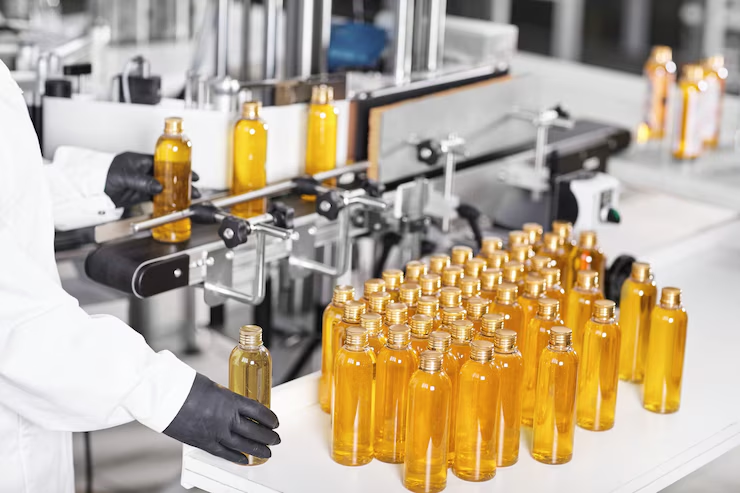
1. Food and Beverage
Key Requirements:
- Moisture resistance: Labels must withstand condensation in refrigeration or freezers.
- Full-color branding: Visual appeal directly impacts customer purchasing decisions on crowded shelves.
- FDA-compliant materials: Labels must be made from food-safe adhesives and substrates, especially if they come in direct contact with food.
Recommended Printers:
- Pigment-based inkjet color label printers: These printers use water-resistant ink that won’t smear or fade when exposed to moisture, oils, or light. They also offer rich, professional-looking color for logos and product imagery.
- Thermal transfer printers: Perfect for outer cartons or bulk packaging, where durability and resistance to abrasion, heat, and cold matter more than visual appeal. With synthetic labels and resin ribbons, they can last in extreme storage conditions.
Common Label Types:
- BOPP (polypropylene) for water/oil resistance
- Glossy or matte for consumer-facing packages
- Freezer-grade adhesive labels
2. Retail
Key Requirements:
- Shelf appeal: High-quality, colorful labels are essential for brand differentiation.
- SKU barcodes: Scannability must be consistent, even at high volumes.
- Promotional tags: Temporary or seasonal labels need to be cost-effective and easy to replace.
Recommended Printers:
- High-resolution color label printers: Especially dye-based inkjet printers for vibrant colors, these are ideal for printing retail packaging, tags, and promotional stickers on demand.
- Direct thermal printers: These offer fast, inexpensive label printing for pricing, receipts, and POS labels. They are ideal for short-term use and high turnover items.
Common Label Types:
- Glossy paper or synthetic labels for packaging
- Direct thermal paper for price and barcode labels
- Removable adhesive labels for promotions
3. Healthcare and Pharmaceuticals
Key Requirements:
- Chemical resistance: Labels may come into contact with alcohol, disinfectants, or other chemicals.
- Smudge-proof barcodes: Barcodes must be reliably scannable at all times, even in refrigerated or sterile environments.
- Regulatory compliance: Labels often require batch numbers, expiration dates, and must meet FDA or EU labeling standards.
Recommended Printers:
- Thermal transfer printers: Provide the most durable, long-lasting print output, essential for serialized barcodes, patient wristbands, and prescription containers. With the right ribbon/media, labels can resist solvents and high temperatures.
- Pigment-based inkjet printers: Useful for color-coding medication types or patient files. They’re increasingly used for compliance labels with visual warnings or pictograms (like those required by GHS standards).
Common Label Types:
- Polyester or vinyl labels for extreme durability
- Tamper-evident and security labels
- Chemical-resistant labels for lab and hospital environments
4. Manufacturing and Industrial
Key Requirements:
- Rugged performance: Labels must endure abrasion, UV exposure, moisture, and sometimes extreme temperatures.
- Adhesion to various surfaces: Including metal, plastic, rubber, and textured materials.
- Heat, UV, and chemical resistance: Critical for compliance with OSHA or GHS labeling requirements, especially for hazardous materials.
Recommended Printers:
- High-quality thermal label printers(thermal transfer): Built for durability, they work well with synthetic labels and resin ribbons for maximum lifespan.
- Durable pigment-based color printers: When color coding is needed for compliance or safety, these printers produce full-color, highly durable labels that resist smearing and fading.
Common Label Types:
- Polyester, vinyl, or polyimide labels for durability
- High-tack adhesives for hard-to-stick surfaces
- GHS-compliant labels with chemical resistance
5. Logistics and Shipping
Key Requirements:
- Fast print speed: Large volumes of labels must be produced quickly to keep shipments moving.
- Readable barcodes: Essential for tracking, scanning, and routing across supply chains.
- Cost efficiency: Labels are used in high quantities and must remain budget-friendly.
Recommended Printers:
- Direct thermal printers: The go-to for shipping labels and warehouse tagging. They're fast, reliable, and have the lowest cost per label when longevity isn’t a concern.
- Thermal transfer printers: Ideal when labels need to last longer, such as those exposed to weather, moisture, or long transit durations.
Common Label Types:
- Thermal paper for short-term use (1–2 weeks)
- Synthetic media for labels exposed to weather or rough handling
- RFID-enabled labels for smart logistics and real-time tracking
Media Compatibility and Label Materials
One often overlooked aspect is the label media itself. Not all printers support all substrates.
Common Label Types:
- Glossy paper: Good for color label printerswith dye-based ink
- Matte paper: Often used for pigment ink
- Polypropylene (BOPP): Waterproof and oil-resistant
- Polyester: Excellent for outdoor use or chemicals
- Thermal paper: Only for direct thermal printers
Tip: Before you buy color label printers or thermal label printers online, verify the types of media supported by your model. Matching the wrong label to the wrong ink can result in smearing, fading, or misfeeds.
Connectivity, Software, and Integration
Label printers are not just stand-alone machines—they often need to work with your broader systems.
Connectivity Options
- USB: Standard for desktop setups
- Ethernet: Ideal for networked environments
- Wi-Fi: Flexible for mobile setups or retail
- Bluetooth: Often used in mobile label printers
Software Compatibility
- Look for compatibility with BarTender, NiceLabel, or proprietary design software.
- For high-volume environments, ERP or inventory software integrationis a must.
Tip: Some printers offer driverless printing or support for ZPL/EPL command languages—important for businesses using Zebra-compatible systems.
Maintenance and Durability: Getting the Most Out of Your Printer
Investing in a good printer is only part of the equation. Proper use and maintenance keep it running efficiently for years.
Maintenance Tips
- Clean the printheadregularly (especially in thermal printers)
- Use the correct label stockto prevent jams and residue buildup
- Keep firmware updatedfor optimal performance
- Store labels in a clean, dry placeto prevent adhesive issues
- Replace ribbons and ink cartridgesbefore they fully run out to maintain quality
Durability Checklist
When evaluating printers, ask:
- Is the housing industrial-grade?
- Are moving parts rated for 1 million+ labels?
- Can it handle different environmental conditions (heat, dust, humidity)?
Cost Considerations and ROI
Upfront vs. Long-Term Costs
Many businesses focus only on the upfront cost, but the real question is: What’s the cost per label over time?
Factors to consider:
- Ink or ribbon costs
- Label media pricing
- Maintenance/repairs
- Downtime from malfunctions
A slightly higher upfront cost for a more efficient printer can pay off in a few months.
Lease vs. Purchase
Some companies choose to lease high-volume machines. This makes sense if:
- You expect seasonal demand
- You need multiple machines across locations
- You prefer to avoid large upfront capital expenditures
Comparing Popular Printer Types: A Summary Table
|
Technology |
Best For |
Speed |
Print Quality |
Cost Efficiency |
Durability |
|
Dye Inkjet |
Retail, cosmetics, small biz |
Medium |
Very High |
Medium |
Low-Medium |
|
Pigment Inkjet |
Food, chemical, pharma |
Medium |
High |
Medium |
High |
|
Direct Thermal |
Logistics, retail, shipping |
Very High |
Medium |
Very High |
Low |
|
Thermal Transfer |
Industrial, pharma, outdoors |
High |
Medium |
High |
Very High |
|
Laser |
Office use, general labeling |
High |
High |
Medium |
Medium |
So, What Should You Choose? 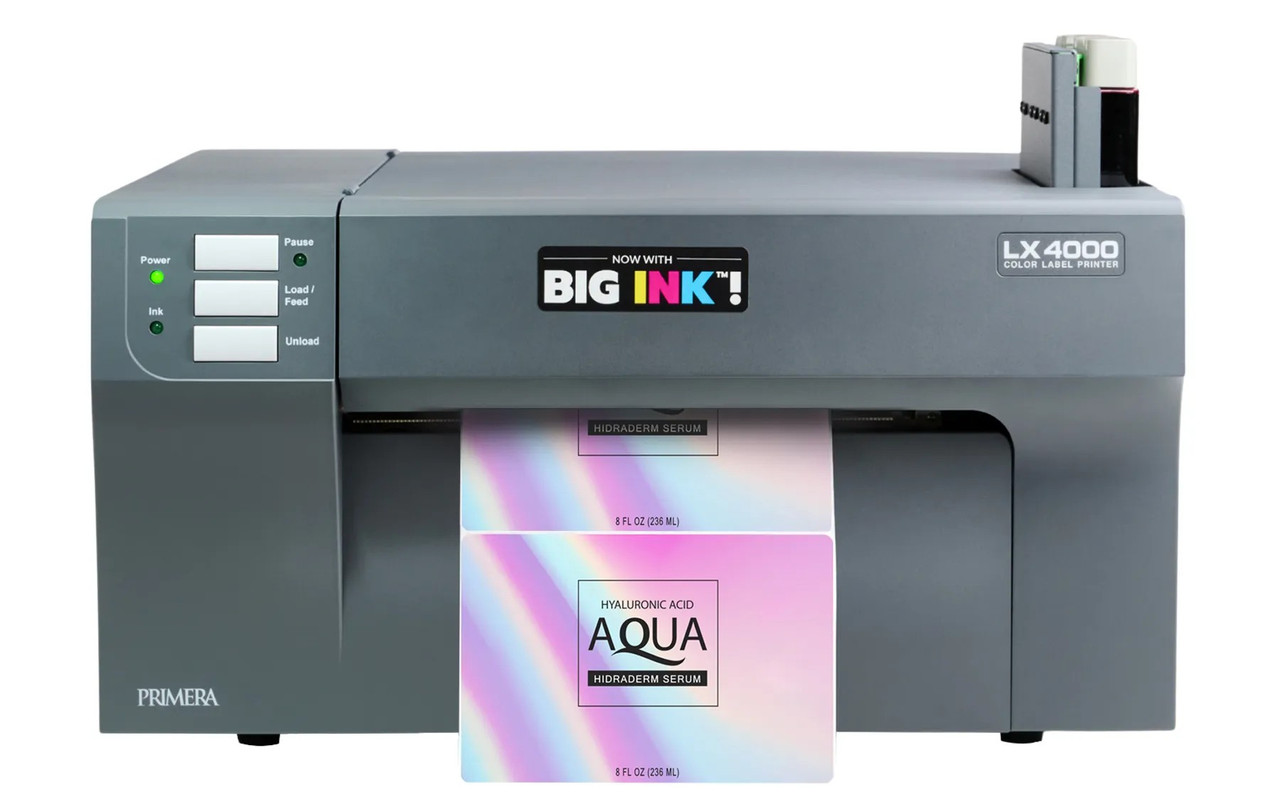
Let’s simplify it:
If you’re branding consumer goods with full-color designs, buy a color label printer with pigment ink.
- If you’re printing thousands of shipping or barcode labels daily, look for thermal label printers—especially direct thermal.
- For highly durable labels in harsh environments, thermal transfer is your go-to.
- And if you're producing office-style labels in small quantities, laser might be enough.
Need help choosing? Our team at DuraFast Label Company can guide you to the most cost-effective and efficient solution based on your unique needs.
Are You Printing Smarter—Or Just Getting By?
A poor labeling setup doesn’t just frustrate—it wastes time, drives up costs, and weakens your brand. The right printer can streamline your production, improve your label appearance, and give you full control over the labeling process.
At DuraFast Label Company, we provide one of the best selections of high-quality thermal label printers and high-resolution color label printers for business applications. Whether you're labeling gourmet snacks, pharmaceutical bottles, or industrial drums, we offer machines that combine speed, quality, and durability—along with the supplies and support to keep them running.
When you purchase color label printers or thermal label printers online from us, you're not just buying hardware. You're gaining access to a reliable partner with years of experience in the labeling industry. We help our customers get up and running fast, reduce downtime, and print labels that do their products justice.
Ready to take control of your labeling?
Order your next label printer from DuraFast Label Company. With fast shipping, professional support, and a wide range of printers to suit any need, we make it easy to print better, faster, and smarter.
